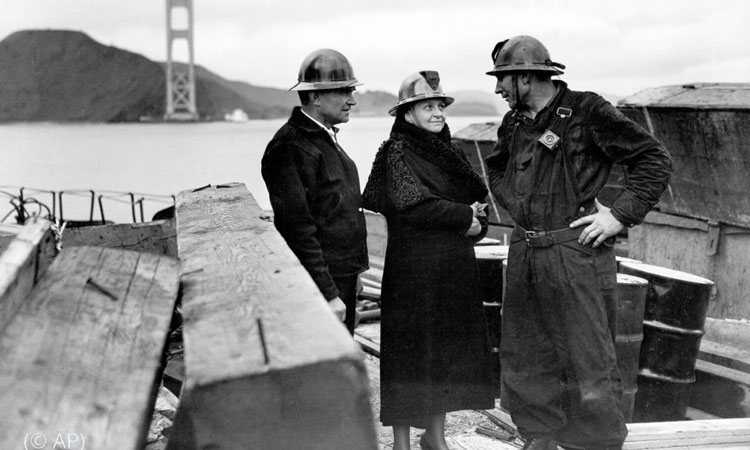First woman in a US presidential cabinet prioritized workers’ rights

When then-President Franklin D. Roosevelt appointed Frances Perkins Secretary of Labor, she became the first woman to hold a cabinet position in a U.S. president’s administration. She would serve the longest term of any labor minister to date.
Back in 1933, women had held the right to vote for more than a decade and were gaining a foothold in American politics—31 women had served in the US Senate and the US House of Representatives.
For her part, Perkins helped Franklin Roosevelt create a New Deal centered on workers. She integrated protections for unions, help for farmers and security for the livelihoods of older people into the New Deal programs. She was, in her words, “deeply touched by the problems of poverty, the concerns of the world, the neglected individuals, the neglected groups”.
Since Perkins’ administration, six other labor secretaries have been women. Recently, President Biden appointed the seventh, Julie Su, who is currently Deputy Secretary. (Women make up more than half of Biden’s cabinet.)
A life of service
Perkins was born in Boston in 1880 to middle-class parents. Her father, Frederick Perkins, moved the family to Worcester, Massachusetts when she was a child, where he co-owned an office supply store.
As a child, Perkins excelled in school, and she followed in her mother’s footsteps and entered Mount Holyoke College, a women’s school in her home state. Today, the Frances Perkins Scholarship helps women older than the typical college student graduate.
After graduating from Mount Holyoke, Perkins earned a master’s degree in economics and sociology from Columbia University in New York.
Perkins was leading a consumer league in New York at the time of the infamous Triangle Shirtwaist Factory fire in 1911, which killed 147 workers, and sparked her own interest in making workplaces safer.
In 1912, on the advice of former US President and Governor of the State of New York, Theodore Roosevelt, Perkins assumed the role of New York Executive Secretary for the Committee on Safety. There she was instrumental in drafting and passing New York City laws that made factories safer, created a minimum wage, and limited weekly hours.
Years later, she said the legislation was a way to pay off the society’s debt to the young people who died in the Triangle Shirtwaist Factory fire.
Cooperation with FDR
When Franklin Roosevelt became President, he took note of Perkins’ work in New York and appointed her US Secretary of Labor.

As part of his New Deal—programs and laws designed to help Americans recover from the Great Depression—Franklin Roosevelt tasked Perkins with boosting job growth and improving workers’ lives.
And she did. Perkins was a key architect of the Social Security and Fair Labor Standards Acts, which standardized unemployment benefits, restricted child labor, established the first national minimum wage, and created welfare programs for the poor and pensions for retirees.

After the death of Franklin Roosevelt in 1945, Perkins resigned her position at the Department of Labor and worked to eliminate discrimination in hiring federal civil servants at the Civil Service Commission.
Perkins explained their mission by saying, “People are what government cares about, and a government should aim to provide the best possible life for all people under its jurisdiction.”

